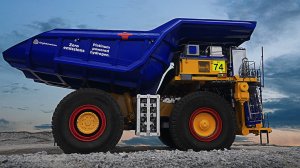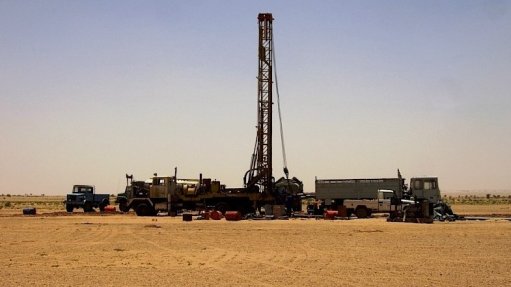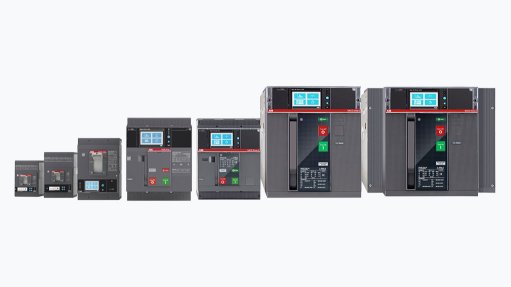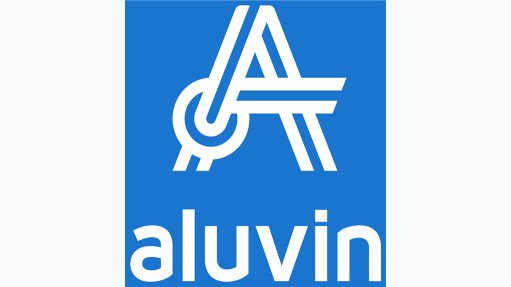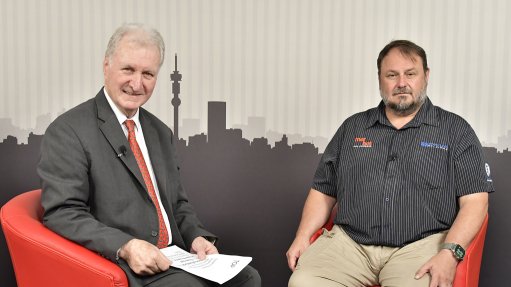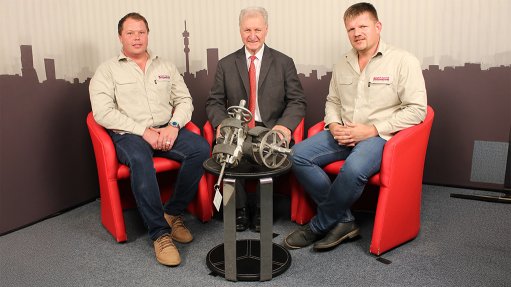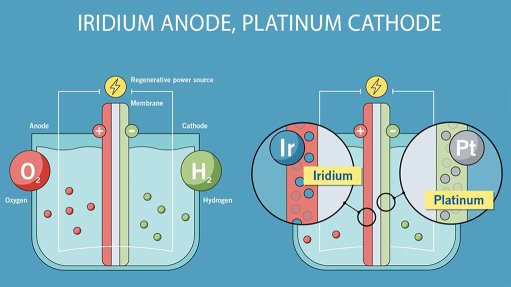World-first hydrogen haul truck operational from August – Anglo Platinum

Anglo Platinum CEO Natascha Viljoen interviewed by Mining Weekly's Martin Creamer. Video: Darlene Creamer.
JOHANNESBURG (miningweekly.com) – The pilot world-first hydrogen haul truck launched early in the year, has had some final changes made to it before it heads into the pit and goes into operational mode from August.
Meanwhile, the second prototype is already underway, where learnings from the first truck are being taken into the development of the second prototype.
“It's important to recognise that as we were driving to get the first prototype out to market as soon as possible, we used existing components and retrofitted them into an existing truck.
“The next prototype is already learning some of the engineering design and also the layout. All of that is happening, as we speak. Then we’re targeting to have our full fleet replaced, as well as the broader Anglo American fleet, by the end of the decade.
“It’s a truck fleet of just over 400 trucks if we look at Anglo American’s full truck fleet, with 40 of those at our Mogalakwena operation,” Anglo American Platinum CEO Natascha Viljoen told Mining Weekly in a Zoom interview. (Also watch attached Creamer Media video.)
Anglo Platinum’s underground mines, such as the Amandelbult platinum mine, by way of example, are not as reliant on hydrogen fuel-cell heavy-duty applications, but will be very reliant on the Anglo American group’s regional renewable energy ecosystem, which is targeting between 3 GW and 5 GW of renewable power.
Mining Weekly: Is there any way that the green hydrogen footprint at Mogalakwena can be extended to provide energy to local communities, or is that out of the question?
Viljoen: It's absolutely part of the question, and such an important part of this journey for us, and it supports the just transition that we require in our country. We have announced the first 100 MW photovoltaic plant that we are building at Mogalakwena that will be used to generate green hydrogen, and in that project, we have a 10% free carry for our communities. Our community participation is really important to us, not only for the economic development that it will bring, but certainly also to help decarbonise the broader South Africa. Beyond that, there’s probably something that's even more exciting, and that is the potential for SA Inc. to become an exporter of renewable energy. Now, that probably seems a little bit far-fetched if we think about the current challenges that we have. We don't even have enough power for ourselves, let alone to export. The reality is with that kind of new economic sector, I'm hoping that it can create such new potential for us as a country, that we look beyond our current challenges, really drive the renewable energy space, make sure that South Africa is totally energy self-sufficient. It is an opportunity for us to make sure that we are energy self-sufficient as a country, but also create a new energy export opportunity, and then obviously bringing back so many other industries that we've lost over many years, as a result of energy uncertainty and energy cost.
Can South Africa’s unused mines help our country to decarbonise?
That’s a good question because there are so many old mines in South Africa. Carbon capture and storage (CCS) is one of a number of tools that we have available to decarbonise society. It is definitely a potential to understand what can be done in many of our existing old mining operations. But, as Anglo American, there's also work being done in looking at how we capture carbon in some of our own tailings dams, certain mineralogy like kimberlites, for instance, being quite amenable to CCS, so certainly, even more opportunities for us, as South Africa, in alternative ways to decarbonise.
I used to get taken to a technology company down in Elandsfontein many years ago and told how they would drop mine water down mine shafts from surface and the water would turn turbines on the way down, and, in that way, would generate electricity when electricity was needed. Later, when there was surplus electricity, they would use that surplus electricity to pump the water back into the tanks above. Is this also a mine hydropower concept that we can look forward to?
Yes, that's perfect, and what we’re also doing is to look how we utilise natural topography in our mining areas. One such area is close to our Mototolo mine, with a natural topography allowing for a dam at the top and a dam at the bottom of the mountain, pumping up water when you’ve additional energy and then to drive energy generation on its way down, and that's obviously a very clean way of generating and storing renewable energy.
How could community job creation be enhanced by the need for mines to decarbonise?
Firstly, there is the opportunity for communities to get involved in renewable energy generation, in the construction and then the maintenance of renewable plants like solar plants, as an example. But I think that's probably just the tip of the iceberg of what could be unlocked. There’s significant potential for other local economic development that's not possible if you don't have energy. There's also the possibility for us in South Africa to bring back some manufacturing that we've lost over a period of time, owing to energy insecurity and high cost. Then there are also other aspects. We know that the University of Cape Town, for instance, recently patented a technology that can reduce the manufacturing time of membranes in fuel cells by as much as 20% and the university is working with Bambili Energy to bring fuel cells into local manufacturing, so there’s also that opportunity. There are many add-on opportunities. For instance, as we think about commercialising the rollout of our trucks, we’re looking to bring the knowledge and skills needed for maintenance of fuel cells and maintenance of power trains, a combination of a fuel cell and a battery, into local communities. There are many additional opportunities that we need to create and that open up the art of the possible, and underpins our support for the just transition, which in a country like ours is really important.
What progress has been made through the partnership with EDF Renewables to generate renewable solar, wind and water power?
Again, a very exciting space, where we are looking at these partnerships and its developing very well. We are ahead of where we would have liked to be in creating this opportunity to generate between 3 GW to 5 GW of renewable energy for South Africa.
How much public-private collaboration is needed to achieve the 3 GW to 5 GW of wind, solar and water power being targeted by your company?
You can't over-emphasize the importance of public-private partnerships. Thinking about society and our communities, it’s important for us to work closely with government and Eskom, with government creating the environment with the necessary policy frameworks to allow us to generate, like they have with the independent power producers, and supporting us and Eskom in developing the required transmission lines, which are all a very important part of what we need to work closely together with government on. The opportunity for us to decarbonise and use this energy crisis that we have to set us on a new path of economic development, crucially needs this public-private partnership to succeed.
Article Enquiry
Email Article
Save Article
Feedback
To advertise email advertising@creamermedia.co.za or click here
Press Office
Announcements
What's On
Subscribe to improve your user experience...
Option 1 (equivalent of R125 a month):
Receive a weekly copy of Creamer Media's Engineering News & Mining Weekly magazine
(print copy for those in South Africa and e-magazine for those outside of South Africa)
Receive daily email newsletters
Access to full search results
Access archive of magazine back copies
Access to Projects in Progress
Access to ONE Research Report of your choice in PDF format
Option 2 (equivalent of R375 a month):
All benefits from Option 1
PLUS
Access to Creamer Media's Research Channel Africa for ALL Research Reports, in PDF format, on various industrial and mining sectors
including Electricity; Water; Energy Transition; Hydrogen; Roads, Rail and Ports; Coal; Gold; Platinum; Battery Metals; etc.
Already a subscriber?
Forgotten your password?
Receive weekly copy of Creamer Media's Engineering News & Mining Weekly magazine (print copy for those in South Africa and e-magazine for those outside of South Africa)
➕
Recieve daily email newsletters
➕
Access to full search results
➕
Access archive of magazine back copies
➕
Access to Projects in Progress
➕
Access to ONE Research Report of your choice in PDF format
RESEARCH CHANNEL AFRICA
R4500 (equivalent of R375 a month)
SUBSCRIBEAll benefits from Option 1
➕
Access to Creamer Media's Research Channel Africa for ALL Research Reports on various industrial and mining sectors, in PDF format, including on:
Electricity
➕
Water
➕
Energy Transition
➕
Hydrogen
➕
Roads, Rail and Ports
➕
Coal
➕
Gold
➕
Platinum
➕
Battery Metals
➕
etc.
Receive all benefits from Option 1 or Option 2 delivered to numerous people at your company
➕
Multiple User names and Passwords for simultaneous log-ins
➕
Intranet integration access to all in your organisation


